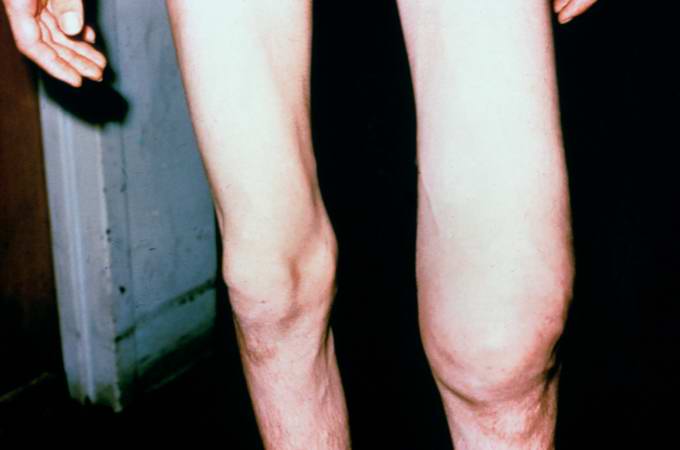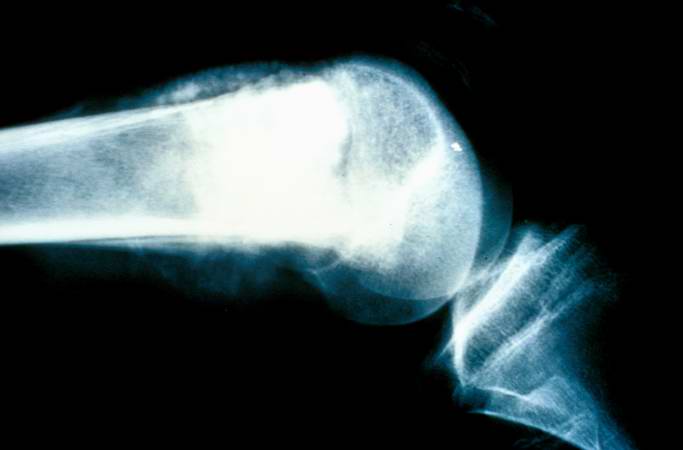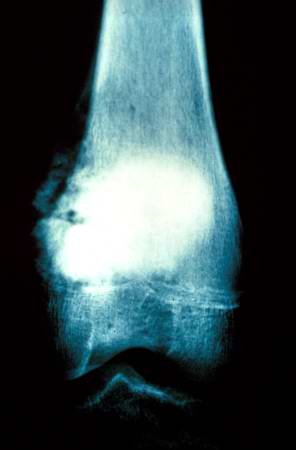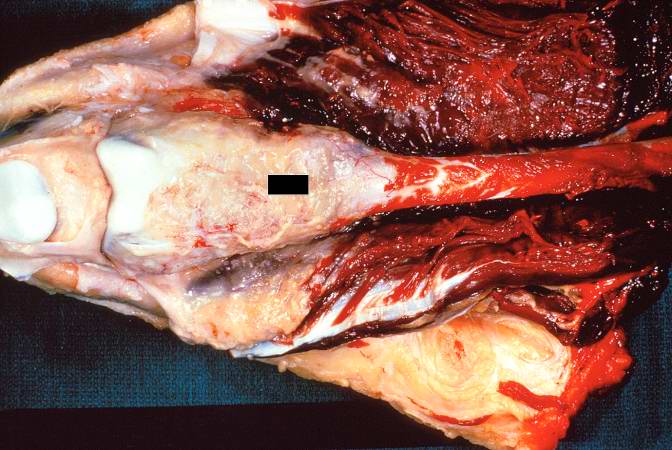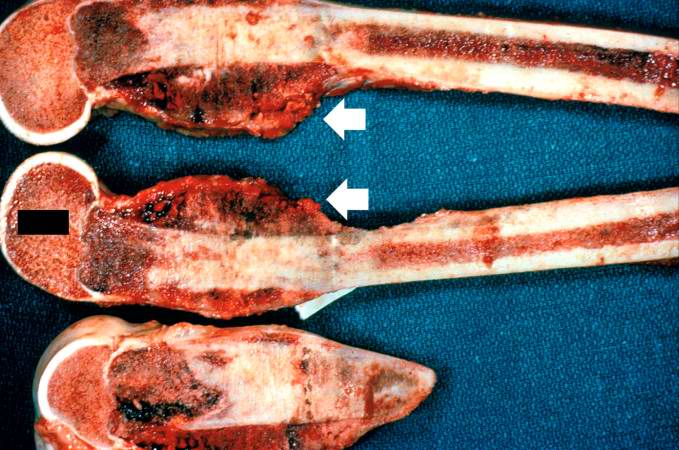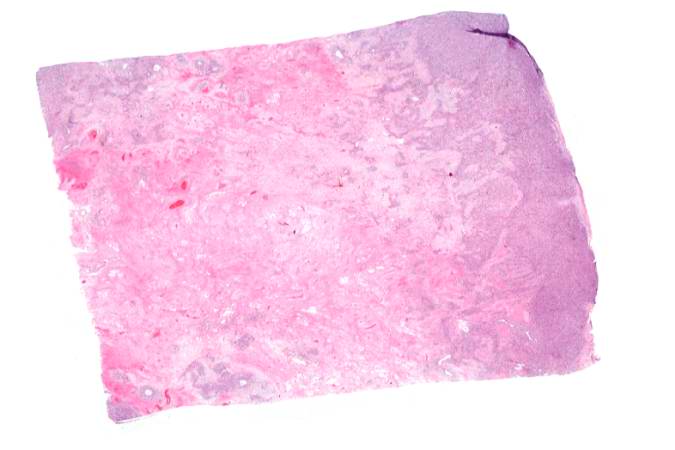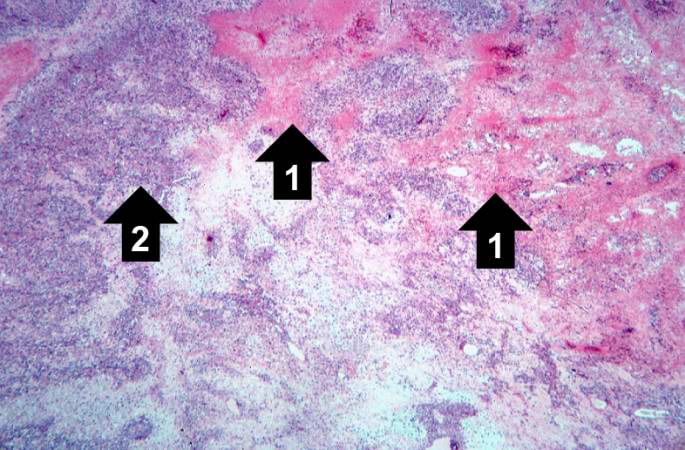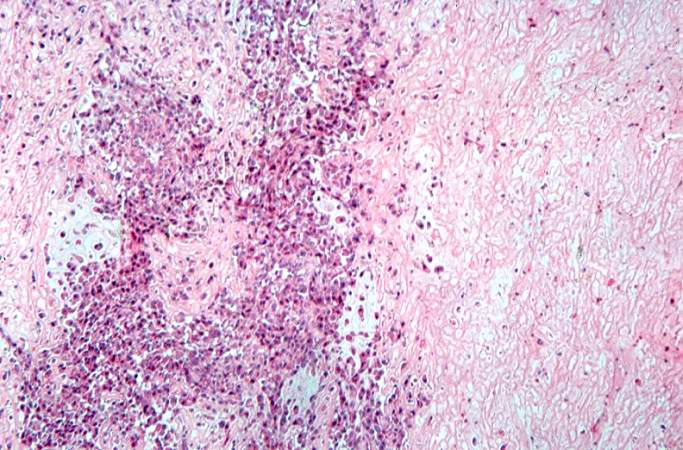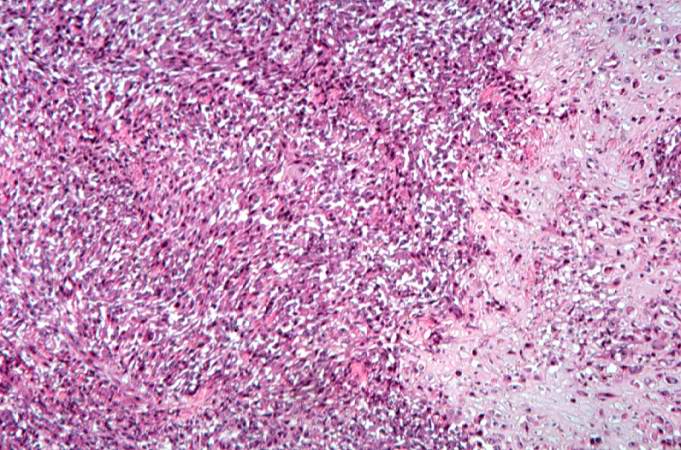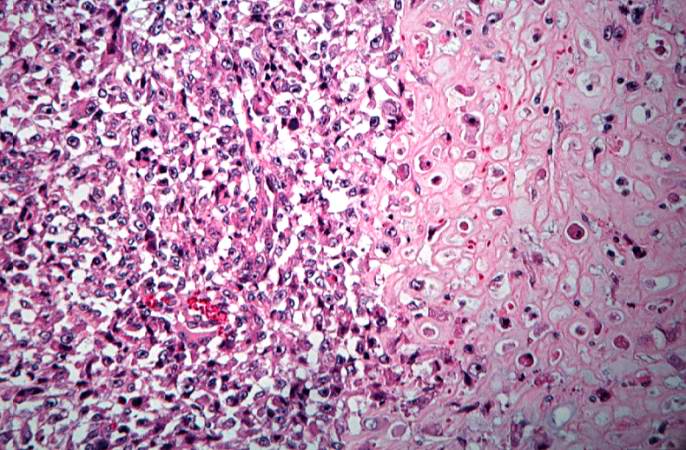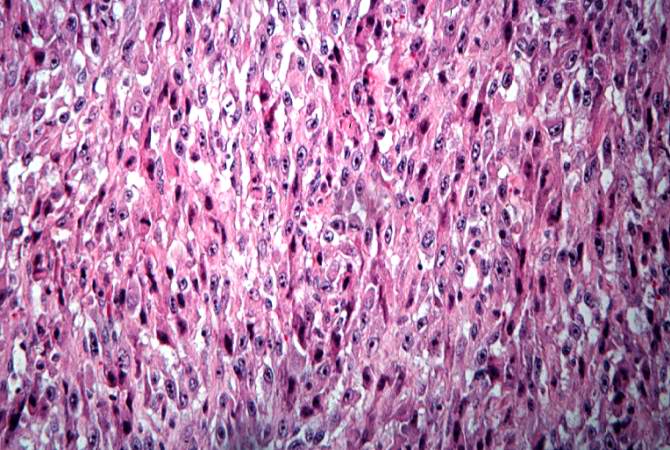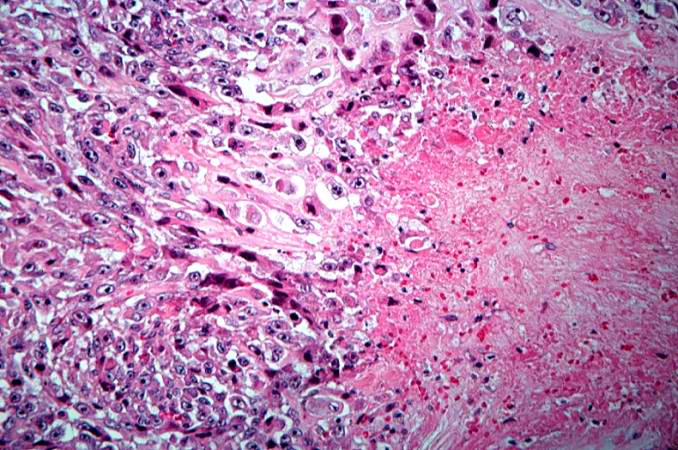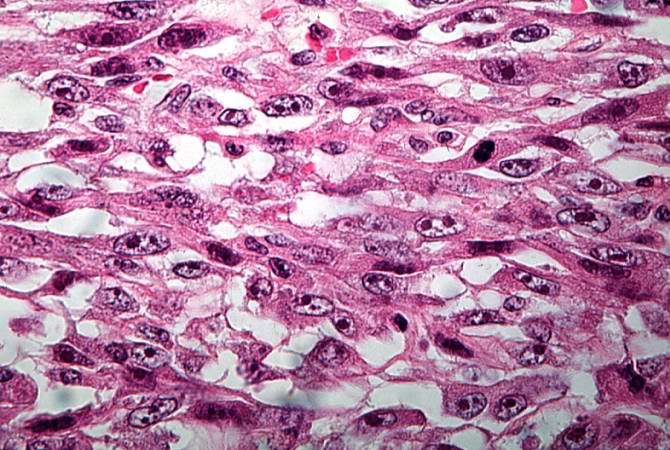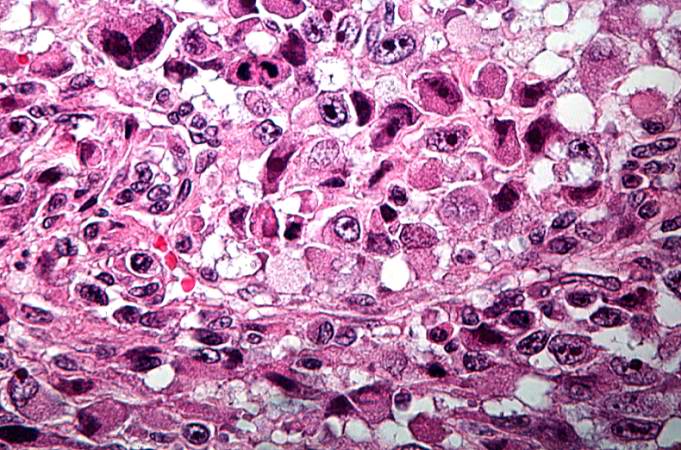Osteosarcoma case study one: Difference between revisions
No edit summary |
No edit summary |
||
| Line 20: | Line 20: | ||
<br clear="left"/> | <br clear="left"/> | ||
[[Image:Osteosarcoma case 002.jpg| | [[Image:Osteosarcoma case 002.jpg|center|thumb|300px|This is a radiograph showing the tumor in the distal femur.]] | ||
<br clear="left"/> | <br clear="left"/> | ||
Revision as of 14:13, 10 September 2012
|
Osteosarcoma Microchapters |
|
Diagnosis |
|---|
|
Treatment |
|
Case Studies |
|
Osteosarcoma case study one On the Web |
|
American Roentgen Ray Society Images of Osteosarcoma case study one |
|
Risk calculators and risk factors for Osteosarcoma case study one |
Editor-In-Chief: C. Michael Gibson, M.S., M.D. [1]
Overview
Case Studies
Case #1
Clinical Summary
This 14-year-old white male first experienced mild pain in the left knee after playing baseball, approximately two months prior to admission. The pain persisted in an intermittent fashion, and was described as being somewhat worse at night. Approximately two weeks prior to admission, the pain increased significantly and was accompanied by marked swelling and loss of considerable motion of the knee joint. These symptoms were accompanied by a history of decreased appetite, lethargy, and a 10-pound weight loss. On physical examination, the left knee was enlarged diffusely, firm, and non-tender. Following biopsy, the patient was subjected to surgical removal of the distal femur and knee with placement of a prosthetic knee joint and bone grafts.
Autopsy Findings
The distal diaphysis of the femur and adjacent soft tissues were involved in a 15 x 10 x 10-cm mass. The cut surface of the mass was fleshy white, with focal areas of hemorrhage.
Pathological Findings
